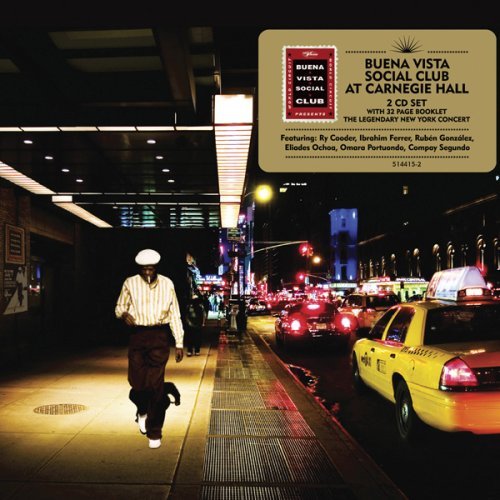12.18 Buena Vista Social Club

Buena Vista Social Club or Havana.- Buena Vista Social Club was a Havana society for black people, very famous in the early decades of the 20th century. The society offered very popular dances where the most refined orchestras were hired.
The dances were attended by the most popular and popular groups of the time from that ethnic group: the groups of Arsenio Rodríguez, René Alvarez and Los Astros, Chocolate, Modelo (in the 50s), Chapottín. The Ideal Orchestra, Neno González, Pedrito Calvo, Charanga de Orestes López, Cheo Belén Puig, Típica de Aniceto Díaz, Orquesta Elegante with Cheo Marquetti, Típica de Silvio Contreras, Armando Valdespí, Eliseo Grenet, Estanislao Servía and Arcaño y sus Maravillas.
They dedicated two musical compositions to this society: Arsenio Rodríguez: Buena Vista in guaguancó and Israel López “Cachao”: Club Social Buena Vista.
In 1995, Juan de Marcos González, director of the band Sierra Maestra, traveled to London to promote the album Dundumbanza. He spoke with Nick Gold, president of World Music, and presented the idea of producing an album featuring a “ven tú” (a selection of old-school All-Stars) of established and somewhat forgotten musicians, reviving the sound of the great Afro-Latin jazz big bands, such as Machito and the Afrocubans. Gold liked the idea, knowing that Cuba holds a great rhythmic deposit with legendary figures.
Inspired by the title Buena Vista Social Club, Juan de Marcos organized a new orchestra, the Afrocuban All Stars, in Havana upon his return. Among the most notable figures were Compay Segundo, Ibrahim Ferrer, Manuel Licea (Puntillita), José Antonio (Maceo), Pío Leyva, Raúl Planas, and Omara Portuondo; musicians of the caliber of Guajiro Mirabal, Javier Zalba, Orlando López (Cachaíto), Rubén González, and Miguel Angá.
Three albums were recorded in 1996, two of which were titled Buena Vista Social Club and A toda Cuba le gusta (A Toda Cuba Le Gusta), both of which were nominated for a Latin Grammy. Finally, the album Buena Vista Social Club won the 1998 Grammy in the traditional music category. This triumph helped spread the success and spur the revival of traditional son and trova at the end of the millennium, as one of the most notable phenomena of 20th-century Cuban music.
Then their worldwide popularity and fame began. Later, Wim Wenders’ documentary Buena Vista Social Club was released. The albums climbed to the top of Billboard magazine in the United States. The artists were booked for the world’s most prestigious venues and theaters and toured the world’s five continents.
Photographers, filmmakers, journalists, screenwriters, researchers, journalists, musicologists, and scholars from all over the world—all those interested in Cuban music—visit Havana following the birth of this Cuban musical phenomenon: the Buena Vista Social Club.








